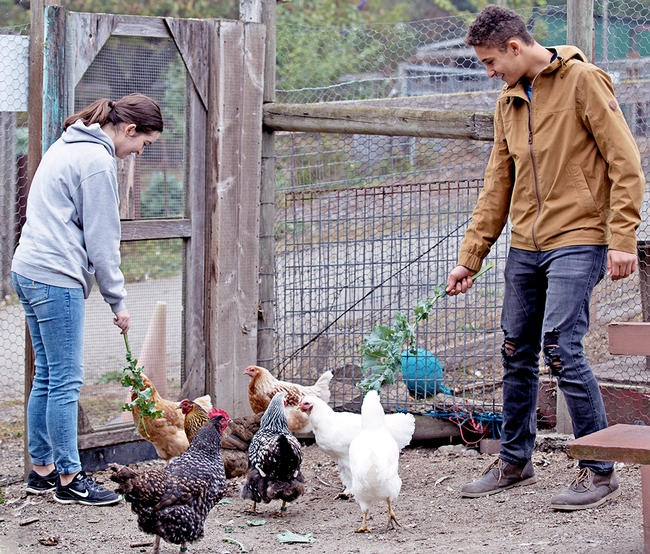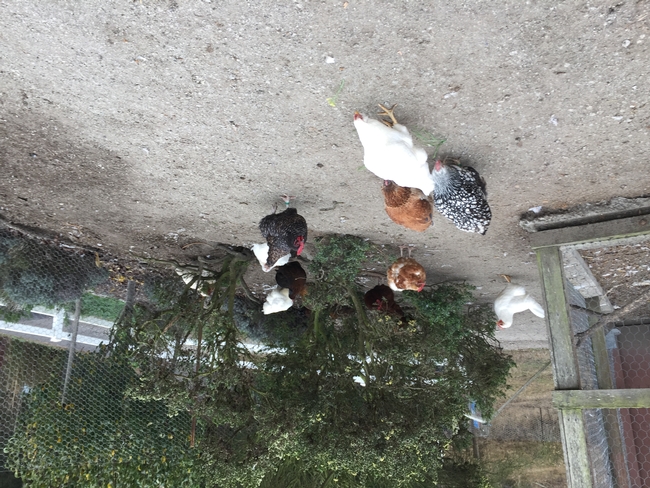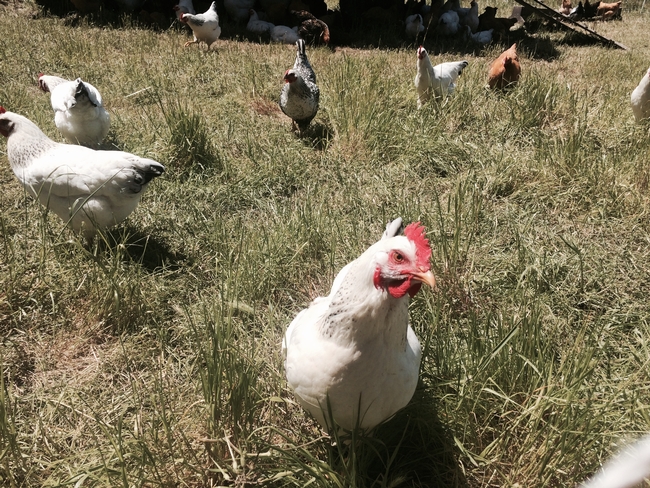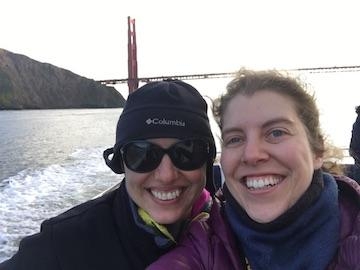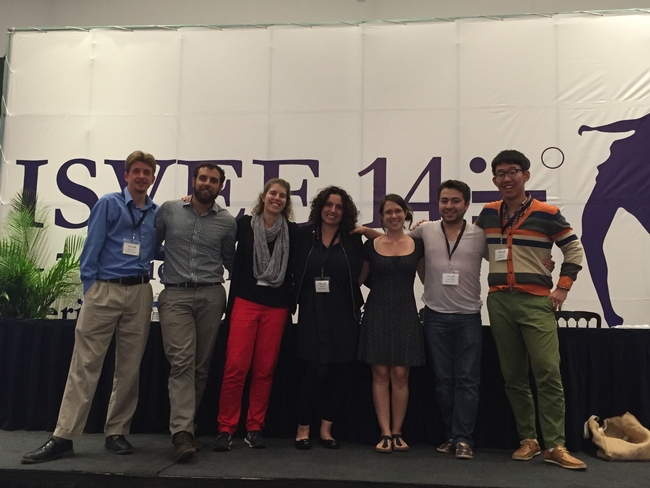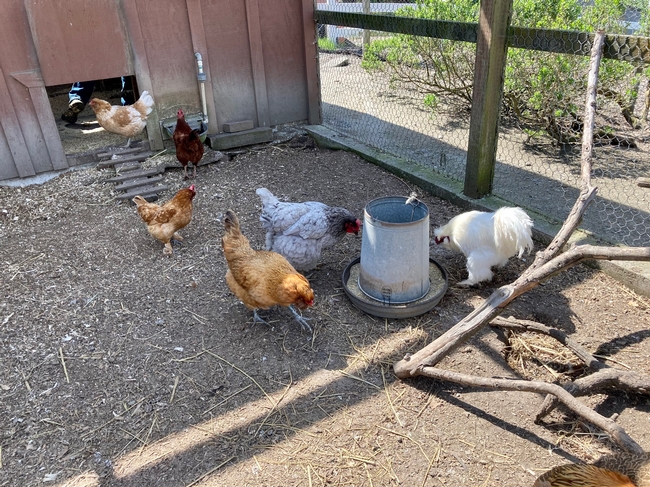
Posts Tagged: Poultry - Other
Bird owners urged to take precautions for avian flu
The highly contagious avian flu is being spread primarily by migratory birds, putting game birds, and backyard and commercial poultry at risk.
“Poultry owners should take precautions to prevent their birds from contacting waterfowl or the habitat that waterfowl frequent because this strain of avian influenza is highly contagious,” said Maurice Pitesky, UC Davis School of Veterinary Medicine associate professor of Cooperative Extension.
Infected waterfowl shed the highly pathogenic avian influenza virus in their feces and respiratory secretions, where the virus can remain viable for months in the environment.
“If you can't confine your birds in a coop, focus on good sanitation and reducing contact with waterfowl and their habitat such as agricultural fields and ponds,” he said.
Pitesky urges commercial and backyard chicken owners to monitor their birds for the following symptoms:
- Reduced egg production
- Trouble breathing
- Clear, runny discharge from nose, mouth and eyes
- Lethargy or lack of energy
- Loss of appetite
- Drinking less
- Swollen eyes, head, wattles or combs
- Discolored or bruised comb, wattles or legs
- Sudden death
To prevent exposure to potentially infected waterfowl, Pitesky suggests reassessing and redoubling biosecurity efforts to prevent contact between wild animals and domestic poultry.
Specifically, he recommends keeping birds away from ponds and other open water where they may contact waterfowl, which are the primary reservoir of the disease. To prevent cross-contamination, use clothing and boots that stay on your property and avoid sharing equipment with other bird owners.
A local veterinarian or UC Cooperative Extension farm advisor may have more suggestions to reduce risk.
For more information about protecting birds from avian influenza, visit https://ucanr.edu/sites/poultry/files/225352.pdf.
Unusual or suspicious sick or dead domestic birds should be reported to the California Department of Food and Agriculture Sick Bird Hotline at (866) 922-2473.
Suspicious wild bird deaths can be reported to California Department of Fish and Wildlife (CDFW) at https://wildlife.ca.gov/Conservation/Laboratories/Wildlife-Health/Monitoring/Mortality-Report.
Poultry owners urged to protect birds from avian influenza virus
A strain of highly pathogenic avian influenza is currently infecting and killing wild birds and domestic birds in at least 29 states across the United States.
A UC Agriculture and Natural Resources poultry expert urges commercial and backyard chicken owners to take precautions.
“When it comes to protecting your flock, there is no treatment for HPAI so the best thing you can do is focus on biosecurity,” said Maurice Pitesky, UC Cooperative Extension poultry specialist in the School of Veterinary Medicine at UC Davis.
“In order to protect our commercial and backyard chickens, it is essential for all of us who own poultry to do our part,” he said.
The current avian influenza outbreak is already considered the worst bird flu outbreak since the 2015 HPAI outbreak when nearly 50 million poultry were euthanized or died.
The HPAI virus is being spread by migrating birds and California is part of the Pacific migratory flyway.
“Waterfowl migrate thousands of miles between wintering and breeding locations and have long been known to be the natural reservoirs for avian influenza viruses, which are associated with high mortality in poultry,” Pitesky explained. “Many of these migrating ducks, geese and swans winter in the relatively warmer climate of California's Central Valley among other locations where they can find appropriate habitat.”
Pitesky recommends preventing chickens and other poultry from exposure to waterfowl and other potential wild bird carriers.
“At the most generic level, that means making sure your birds are separated from any wildlife,” he said. “Whether you have a million-bird farm or just a few backyard chickens, the message is the same: maintain the best biosecurity you can, which includes fencing and make sure you reduce reasons for waterfowl to come near your birds such as spilled feed and ponding of water.
“Our previous research has shown that waterfowl are attracted to both natural and human-made wetlands and lagoons. So, if you live near one of these types of habitats, your biosecurity efforts are even more important.”
The HPAI virus does not currently affect humans. Pitesky said it is important to recognize that avian influenza viruses, like all viruses, can mutate or recombine to form new versions of virus that may affect humans.
For more information on biosecurity and where HPAI has been identified in the U.S., please visit the UC Cooperative Extension poultry website at https://ucanr.edu/sites/poultry/Resources_335/HPAI.
Poultry owners who have questions may reach Pitesky at mepitesky@ucdavis.edu.
Backyard chickens stay healthy with help from UC researchers, website
In recent years, there has been a rise in the number of backyard poultry farms as people have taken an increased interest in farming. With raising these animals comes new challenges in taking care of them and ensuring they stay healthy.
However, there is a gap between the needs of these small avian communities in Californians' backyards and the current services available that generally work for service large-scale poultry operations alone.
This is where Beatriz Martinez Lopez, professor of infectious disease epidemiology, and Alda Pires, associate professor for Cooperative Extension and agronomist, come into play. Both in UC Davis School of Veterinary Medicine, the two women work on projects addressing avian influenza, animal health and food safety needs of people raising backyard poultry and livestock.
“Alda has a lot of experience and her work is amazing,” said Martinez Lopez.
To better address the diseases and problems associated with raising birds in the California context, they completed a series of needs assessments to understand the animal health requirements of small farms and backyard chickens.
“It has helped us be more organized and structured in our outreach,” Pires said. “There is a need to apply simple, practical biosecurity plans that are adapted for multiple species to small-scale, backyard and diversified farms.”
Through a multistate project funded by the USDA National Animal Disease Preparedness and Response Program, they created a website, FARM PPE, for producers to easily access biosecurity plan templates and additional resources. PPE stands for prepare, prevent and evaluate to reduce disease risk.
“Our clients are benefiting from the structured network we created,” Pires continued. “This website project, FARM PPE, aims to improve uptake of biosecurity measures on small-scale farms, by focusing on farmers and other professionals, including extension educators and veterinarians.”
The website project also created several trainings for farmers and educators to generate consistent messaging for small-scale farms.
With backyard birds being one of the potential sources of the highly pathogenic avian influenza virus, it is important to understand how the disease could spread to commercial flocks. The major challenge of the project is the complexity of the human/wildlife interface and the difficulties in predicting where an outbreak may arise.
Together, Martinez Lopez and Pires have published several papers about modeling disease transmission, and the work yields valuable information about hotspots for targeting surveillance strategies and wildlife surveys.
Their professional partnership is rooted in their personal connection; the scientists met as graduate students in 2006 and were delighted to cross paths again at UC Davis.
“Our collaboration started with friendship and our common interests in epidemiology and animal health,” said Pires.
As exemplified by their own careers, Martinez Lopez and Pires stress the importance of networking, getting involved and taking risks.
“Invite farm advisors and outreach partners from the beginning of the process so that they are part of the team,” Pires said. “That way you can create solutions that will give them the knowledge and resources they need.”
Chicken owners invited to take survey guiding disease prevention
Californians who raise chickens and game fowl are invited to participate in a study to help the University of California more effectively deliver poultry health information and prevent the spread of diseases such as avian influenza.
Myrna Cadena, a Ph.D. student working with Maurice Pitesky, UC Cooperative Extension poultry specialist at UC Davis School of Veterinary Medicine, is leading a study with the Backyard Chickens and Game Fowl survey: https://bit.ly/3rWYpOa.
“Knowing how live birds are moved in California will be crucial in the event of a poultry disease outbreak,” Cadena said. “For example, if we know which counties have a large number of chickens coming in and out, then we can focus resources in those areas. The data collected could help us determine where to hold biosecurity workshops or distribute poultry vaccines.”
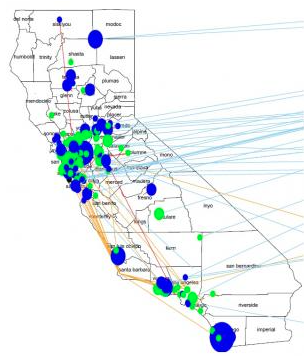
The survey takes 10 to 15 minutes to complete and includes questions about the flock; biosecurity practices; buying, selling and trading birds; and movement of birds for shows and fairs.
“We are university researchers, not a regulatory agency, so we are focused on outreach and education, not regulation and enforcement,” said Pitesky, who encourages owners of small-scale poultry operations to contribute to the research project.
To participate in this voluntary study about backyard chickens and game fowl in California, please fill out the survey at https://bit.ly/3rWYpOa by Sept. 30.
If you have any questions or comments, please contact the researchers at mepitesky@ucdavis.edu or mmcadena@ucdavis.edu.
Also, check out the video series, The Sitch, where Pitesky breaks down the basics of beginning a poultry farm and raising a backyard chicken flock: https://www.youtube.com/channel/UCP_1xWyE9U3JxjpsL9W-Crg.
USDA to Provide Pandemic Assistance to Livestock Producers for Animal Losses
Farm Service Agency Will Begin Taking Applications for indemnity program July 20th
WASHINGTON, July 13, 2021 — Livestock and poultry producers who suffered losses during the pandemic due to insufficient access to processing can apply for assistance for those losses and the cost of depopulation and disposal of the animals. The U.S. Department of Agriculture (USDA) Secretary Vilsack announced the Pandemic Livestock Indemnity Program (PLIP) in [recorded] remarks at the National Pork Industry Conference in Wisconsin Dells, WI. The announcement is part of USDA's Pandemic Assistance for Producers initiative. Livestock and poultry producers can apply for assistance through USDA's Farm Service Agency (FSA) July 20 through Sept. 17, 2021.
The Consolidated Appropriations Act, 2021, authorized payments to producers for losses of livestock or poultry depopulated from March 1, 2020 through December 26, 2020, due to insufficient processing access as a result of the pandemic. PLIP payments will be based on 80% of the fair market value of the livestock and poultry and for the cost of depopulation and disposal of the animal. Eligible livestock and poultry include swine, chickens and turkeys, but pork producers are expected to be the primary recipients of the assistance.
“Throughout the pandemic, we learned very quickly the importance and vulnerability of the supply chain to our food supply,” said Agriculture Secretary Vilsack. “Many livestock producers had to make the unfortunate decision to depopulate their livestock inventory when there simply was no other option. This targeted assistance will help livestock and poultry producers that were among the hardest hit by the pandemic alleviate some financial burden from these losses.”
Additional Assistance Planned
The previous administration proposed pandemic assistance using flat rates across the industry, which does not take into account the different levels of harm felt by different producers. Pork industry supported analysis projected that disruptions in processing capacity in the pork supply chain create a situation with small hog producers and especially those that sell on the spot market or negotiate prices, bear a disproportionate share of losses. USDA has examined the difference between the negotiated prices for hogs and the 5-year average and documented a significant drop during April through September of 2020 due to the pandemic. USDA has set aside up to $50 million in pandemic assistance funds to provide additional assistance for small hog producers that use the spot market or negotiate prices. Details on the additional targeted assistance are expected to be available this summer.
PLIP Program Details
Eligible livestock must have been depopulated from March 1, 2020 through December 26, 2020, due to insufficient processing access as a result of the pandemic. Livestock must have been physically located in the U.S. or a territory of the U.S. at the time of depopulation.
Eligible livestock owners include persons or legal entities who, as of the day the eligible livestock was depopulated, had legal ownership of the livestock. Packers, live poultry dealers and contract growers are not eligible for PLIP.
PLIP payments compensate participants for 80% of both the loss of the eligible livestock or poultry and for the cost of depopulation and disposal based on a single payment rate per head. PLIP payments will be calculated by multiplying the number of head of eligible livestock or poultry by the payment rate per head, and then subtracting the amount of any payments the eligible livestock or poultry owner has received for disposal of the livestock or poultry under the Natural Resources Conservation Service (NRCS) Environmental Quality Incentives Program (EQIP) or a state program. The payments will also be reduced by any Coronavirus Food Assistance Program (CFAP 1 and 2) payments paid on the same inventory of swine that were depopulated.
There is no per person or legal entity payment limitation on PLIP payments. To be eligible for payments, a person or legal entity must have an average adjusted gross income (AGI) of less than $900,000 for tax years 2016, 2017 and 2018.
Applying for Assistance
Eligible livestock and poultry producers can apply for PLIP starting July 20, 2021, by completing the FSA-620, Pandemic Livestock Indemnity Program application, and submitting it to any FSA county office. Additional documentation may be required. Visit farmers.gov/plip for a copy of the Notice of Funding Availability and more information on how to apply.
Applications can be submitted to the FSA office at any USDA Service Center nationwide by mail, fax, hand delivery or via electronic means. To find your local FSA office, visit farmers.gov/service-locator. Livestock and poultry producers can also call 877-508-8364 to speak directly with a USDA employee ready to offer assistance.
As USDA looks to long-term solutions to build back a better food system, the Department is committed to delivering financial assistance to farmers, ranchers, and agricultural producers and businesses who have been impacted by COVID-19 market disruptions. Since USDA rolled out the Pandemic Assistance initiative in March, the Department has announced over $7 billion in assistance to producers and agriculture entities. For more details, please visit www.farmers.gov/pandemic-assistance.
USDA touches the lives of all Americans each day in so many positive ways. In the Biden-Harris Administration, USDA is transforming America's food system with a greater focus on more resilient local and regional food production, fairer markets for all producers, ensuring access to healthy and nutritious food in all communities, building new markets and streams of income for farmers and producers using climate smart food and forestry practices, making historic investments in infrastructure and clean energy capabilities in rural America, and committing to equity across the Department by removing systemic barriers and building a workforce more representative of America. To learn more, visit www.usda.gov.

